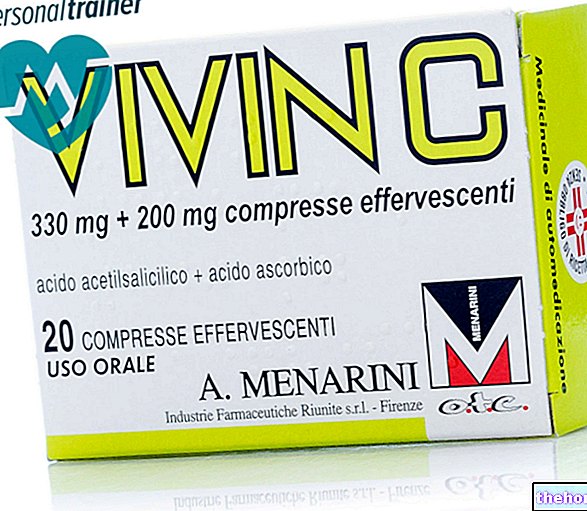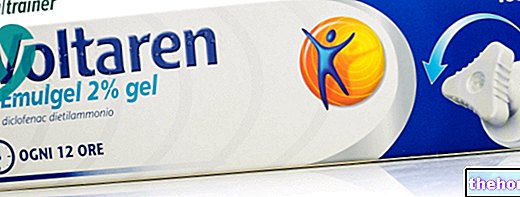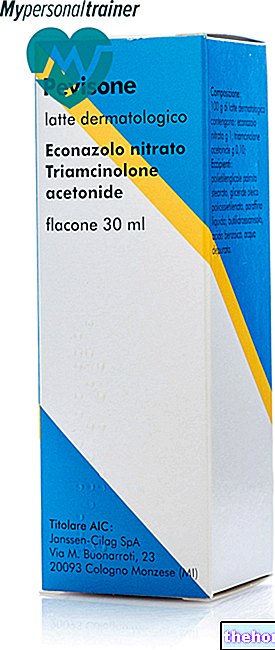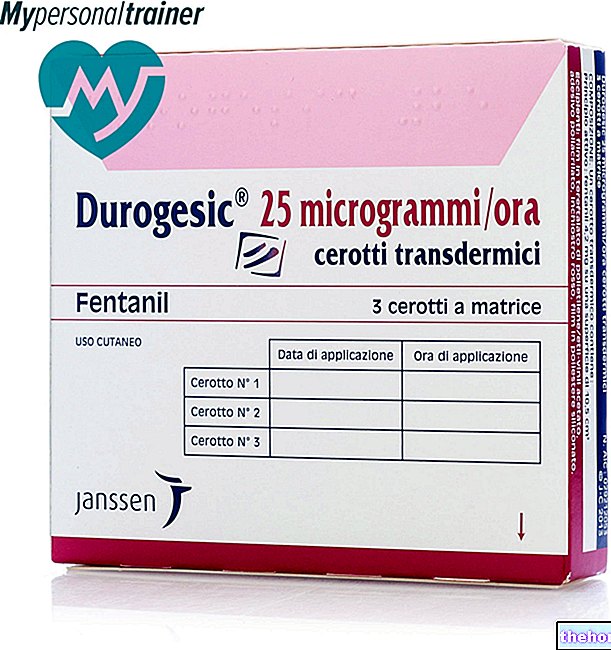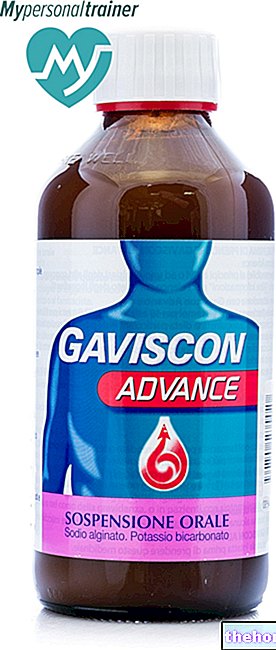Active ingredients: Ketoconazole
TRIATOP 10mg / g Shampoo
Indications Why is Triatop used? What is it for?
Triatop contains ketoconazole which belongs to a group of medicines called "antifungals" used to treat fungal infections. Triatop is used for the treatment of scalp conditions such as dandruff (resulting from a fungal infection), greasiness, itching.
Talk to your doctor if you don't feel better or if you feel worse.
Contraindications When Triatop should not be used
Do not use Triatop
- if you are allergic to ketoconazole or any of the other ingredients of this medicine.
- in children under 12 years of age.
Precautions for use What you need to know before taking Triatop
Talk to your doctor or pharmacist before using Triatop.
Allergy symptoms include severe itching and redness of the skin following application of Triatop.
After prolonged treatment with anti-inflammatory medicines (corticosteroids) on the scalp:
- wait 15 days before applying Triatop on the same skin area; or
- Start treatment with Triatop immediately, continuing to apply the anti-inflammatory medicine (corticosteroid) gradually decreasing the amount until it stops completely over 2 weeks.
Use Triatop with caution if:
- the person who has to use it is elderly;
- you have been diagnosed with liver disease;
- you have previously been treated with griseofulvin (another antifungal medicine).
As with other shampoos, avoid contact with the eyes. If this happens, rinse your eyes with plenty of water.
The use, especially if prolonged, of the product can give rise to sensitization phenomena; in this case it is necessary to interrupt the treatment and consult the doctor.
Children
Do not use Triatop in children under 12 years of age.
Interactions Which drugs or foods can modify the effect of Triatop
Tell your doctor or pharmacist if you are using, have recently used or might use any other medicines.
Allergic reactions may occur following the use of Triatop with the following antifungal medicines:
- miconazole,
- econazole,
- isoconazole.
Warnings It is important to know that:
Pregnancy and breastfeeding
If you are pregnant or breast-feeding, think you may be pregnant or are planning to have a baby, ask your doctor or pharmacist for advice before using this medicine.
Although no risks associated with the use of Triatop have been identified to date, use this medicine only under medical supervision, during pregnancy or while breastfeeding.
Driving and using machines
Triatop has no or negligible influence on the ability to drive or use machines.
Triatop contains: butylated hydroxytoluene (E321), formaldehyde, methylparaben (E218) and propylparaben (E216).
- Butylated hydroxytoluene (E321) may cause local skin reactions (eg contact dermatitis) or irritation of the eyes and mucous membranes.
- Formaldehyde, contained in the excipient sodium lauryl ether sulphate, can cause local skin reactions (eg contact dermatitis).
- Methylparaben (E218) and propylparaben (E216), contained in the excipient poliquaternium-7, can cause allergic reactions (even delayed).
Dose, Method and Time of Administration How to use Triatop: Posology
Always use this medicine exactly as described in this leaflet or as directed by your doctor or pharmacist. If in doubt, consult your doctor or pharmacist.
Distribute a sufficient quantity of Triatop on wet hair and massage lightly until obtaining a generous foam. Let the product act for 3-5 minutes, then rinse.
It is recommended to carry out the treatment 2-3 times a week. The disappearance of symptoms usually occurs by the 4th week.
Do not exceed the recommended dose.
After a short period of treatment without results, consult your doctor.
Use in children
Do not use this medicine in children under 12 years of age.
Overdose What to do if you have taken too much Triatop
In case of accidental ingestion of an excessive dose of Triatop, notify your doctor immediately or go to the nearest hospital.
Triatop must not be ingested.
In case of accidental ingestion, symptomatic and supportive measures can be implemented.
Vomiting or gastric lavage should not be induced to avoid aspiration.
Side Effects What are the side effects of Triatop
Like all medicines, Triatop can cause side effects, although not everybody gets them.
The following side effects have been observed with Triatop:
Common side effects (may affect up to 1 in 10 people):
- Abnormal hair structure
- Application site itching
Uncommon side effects (may affect up to 1 in 100 people):
- Eye irritation
- Skin exfoliation
- Application site alopecia (hair loss)
- Dryness at the application site
- Application site irritation
- Application site rash
Rare side effects (may affect up to 1 in 1000 people):
- Conjunctivitis (ocular inflammation of the conjunctiva membrane)
- Acne
- Changes in hair color
- Burning sensation of the skin
- Application site hyperesthesia (hypersensitivity)
- Folliculitis (inflammation of the hair follicle) at the application site
- Pustules at the application site
- Application site reaction
- Sensitivity at the application site
Side effects with frequency not known:
- Allergic reactions
- Contact dermatitis
- Angioedema (swelling of the face, mouth, lips and / or tongue)
- Generalized rash (red spots on the skin)
- Urticaria
In case of intolerance, suspend the treatment.
Compliance with the instructions contained in the package leaflet reduces the risk of undesirable effects.
Reporting of side effects
If you get any side effects, talk to your doctor or pharmacist. This includes any possible side effects not listed in this leaflet. You can also report side effects directly via the national reporting system at www.agenziafarmaco.it/it/responsabili. By reporting side effects you can help provide more information on the safety of this medicine.
Expiry and Retention
Keep this medicine out of the sight and reach of children.
Do not use this medicine after the expiry date which is stated on the package after the word EXP.
The expiry date refers to the last day of that month. The expiry date refers to the unopened product, correctly stored.
Do not store above 25 ° C.
Do not throw any medicines via wastewater or household waste. Ask your pharmacist how to throw away medicines you no longer use. This will help protect the environment.
Other information
What Triatop contains
The active ingredient is ketoconazole.
One gram of shampoo contains 10mg of ketoconazole.
The other ingredients are:
- Sodium lauryl ether sulfate (contains formaldehyde)
- sodium coccoyl sarcosinate
- coconutyl monoethanolamide
- stearate ethylene glycol
- poliquaternium-7 (contains methylparaben (E218) and propylparaben (E216))
- carbomer
- tetrasodium edetate
- perfume (floral bouquet)
- sodium chloride (to regulate viscosity)
- sodium hydroxide (to adjust the pH)
- butylated hydroxytoluene (E321)
- quaternium-15
- hydrochloric acid (to adjust the pH)
- patented blue V (E131)
- purified water
What Triatop looks like and contents of the pack
Shampoo - 120 ml bottle.
Source Package Leaflet: AIFA (Italian Medicines Agency). Content published in January 2016. The information present may not be up-to-date.
To have access to the most up-to-date version, it is advisable to access the AIFA (Italian Medicines Agency) website. Disclaimer and useful information.
01.0 NAME OF THE MEDICINAL PRODUCT
TRIATOP 1% SHAMPOO
02.0 QUALITATIVE AND QUANTITATIVE COMPOSITION
One gram of shampoo contains:
Active principle: ketoconazole 10 mg
Excipients with known effects:
• butylated hydroxytoluene (E321) 1.0 mg
• formaldehyde 0.18 mg
• methylparaben (E218) 0.01 mg
• propylparaben (E216) 0.002 mg
For the full list of excipients, see section 6.1.
03.0 PHARMACEUTICAL FORM
Shampoo.
04.0 CLINICAL INFORMATION
04.1 Therapeutic indications
Treatment of scalp affections, such as dandruff, greasiness, itching.
04.2 Posology and method of administration
Distribute a small amount of TRIATOP on wet hair and massage lightly. Leave the product to act for 3 - 5 minutes, then rinse.
It is recommended to carry out the treatment 2-3 times a week. The disappearance of symptoms usually occurs by the 4th week.
Do not exceed the recommended dose.
04.3 Contraindications
TRIATOP Shampoo 1% is contraindicated in individuals with known hypersensitivity to any of the ingredients.
Do not use the product in children under 12 years of age.
04.4 Special warnings and appropriate precautions for use
After a prolonged treatment with corticosteroids on the scalp, before applying TRIATOP shampoo on the same skin area it is advisable to wait 15 days, or immediately start treatment with TRIATOP, continuing to apply the corticosteroid in decreasing doses until the steroid therapy is eliminated in the "arc. 2 weeks.
Given the poor percutaneous absorption of ketoconazole, no systemic side effects are to be expected following the use of the product, nevertheless elderly patients, those with a history of liver disease and those previously treated with griseofulvin, should be treated with great caution, interrupting treatment if signs suggestive of a hepatic reaction develop.
The use, especially if prolonged, of the product can give rise to sensitization phenomena; in this case it is necessary to interrupt the treatment.
As with other shampoos, avoid contact with the eyes. If this happens, rinse thoroughly with running water.
Information on excipients: TRIATOP contains butylated hydroxytoluene (E321), formaldehyde, methylparaben (E218) and propylparaben (E216).
Butylated hydroxytoluene (E321) may cause local skin reactions (eg contact dermatitis) or irritation of the eyes and mucous membranes.
Formaldehyde, contained in the excipient sodium lauryl ether sulphate, can cause local skin reactions (eg contact dermatitis).
Methylparaben (E218) and propylparaben (E216), contained in the excipient poliquaternium-7, can cause allergic reactions (even delayed).
04.5 Interactions with other medicinal products and other forms of interaction
Cross-hypersensitivity or cross-sensitization reactions may occur following the simultaneous use of antifungal preparations of the same class (miconazole, econazole, isoconazole).
04.6 Pregnancy and breastfeeding
There are no controlled and adequate studies on the use of Triatop shampoo during pregnancy or breastfeeding.
Plasma concentrations of ketoconazole were not detected after topical administration of Ketoconazole shampoo 1% to the scalp of non-pregnant women.
Although no risks associated with the use of Triatop shampoo 1% during pregnancy or breastfeeding have been identified to date, caution should be exercised when prescribing the medicine to pregnant women.
04.7 Effects on ability to drive and use machines
TRIATOP shampoo does not affect the ability to drive or use machines.
04.8 Undesirable effects
The safety of TRIATOP shampoo 1% was evaluated in 1258 subjects in 8 clinical studies in which TRIATOP shampoo 1% was applied to the scalp.
Pooled data from these clinical studies revealed that the most frequent Adverse Drug Reactions (ADRs) (≥ 1% incidence) were: abnormal hair structure (2.4%) and application site itching (1.8 %).
Including the ADRs above, the table below shows the ADRs that have been reported with the use of Ketoconazole Shampoo 1% both in clinical trials and in post-marketing experience. Frequencies are reported according to the following conventional classification: very common (≥ 1/10), common (≥ 1/100 to
04.9 Overdose
In case of accidental ingestion, supportive and symptomatic measures can be put in place. To avoid aspiration, no emesis or gastric lavage should be induced.
05.0 PHARMACOLOGICAL PROPERTIES
05.1 Pharmacodynamic properties
Pharmacotherapeutic group: Antifungals for topical use, imidazole and triazole derivatives, ketoconazole. ATC code: D01A C08.
Ketoconazole is a synthetic imidazoldioxolane derivative with fungicidal or fungistatic activity against dermatophytes and yeasts, including Malassezia spp. (Also known as Pityrosporum spp.) which are considered to be associated with the presence of dandruff.
TRIATOP shampoo 1% controls flaking and itching associated with dandruff.
05.2 Pharmacokinetic properties
Plasma concentrations of ketoconazole are not detectable following topical application of TRIATOP Shampoo 1% to the scalp.
05.3 Preclinical safety data
Preclinical data based on conventional studies reveal no special hazard for humans, including acute toxicity studies following oral and topical administration, primary eye irritation, skin irritation due to repeated dose and skin toxicity.
06.0 PHARMACEUTICAL INFORMATION
06.1 Excipients
Sodium lauryl ether sulfate (contains formaldehyde)
Sodium coccoyl sarcosinate
Coccoyl monoethanolamide
Ethylene glycol distearate
Poliquaternium-7 (contains methylparaben (E218) and propylparaben (E216))
Carbomer
Edetate tetrasodium
Perfume (floral bouquet)
Sodium chloride (to adjust viscosity)
Sodium hydroxide (to adjust the pH)
Butylated hydroxytoluene (E321)
Quaternium-15
Hydrochloric acid (to adjust the pH)
Patent Blue V (E131)
Purified water
06.2 Incompatibility
None known.
06.3 Period of validity
2 years.
06.4 Special precautions for storage
Store at a temperature not exceeding 25 ° C.
Warning: do not use the medicine after the expiry date indicated on the package
06.5 Nature of the immediate packaging and contents of the package
120 ml bottle.
06.6 Instructions for use and handling
No particular education.
07.0 MARKETING AUTHORIZATION HOLDER
Janssen-Cilag SpA
Via M. Buonarroti, 23
20093 Cologno Monzese (MI)
08.0 MARKETING AUTHORIZATION NUMBER
AIC n. 029009014
09.0 DATE OF FIRST AUTHORIZATION OR RENEWAL OF THE AUTHORIZATION
November 1994 / November 2009
10.0 DATE OF REVISION OF THE TEXT
July 2012

